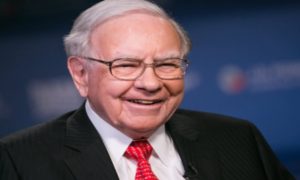Building a portfolio for passive income can be a challenging process, especially if you are just starting out. But it doesn’t have to be this way. Investors simply need to buy at least a couple of dozen proven dividend payers across a variety of economic sectors to build a durable portfolio.
Also Read- Heineken Seals €1 Billion Share Buyback as Femsa Exit Begins
Whether you’re new to income investing or are a seasoned veteran, here are three reliable dividend payers that could shower you with growing streams of cash flow for the next few decades.
As demand for P&G’s products organically grows as a result of population growth and inorganically from acquisitions, analysts think that the company has a decent future ahead of itself. That’s why the average analyst forecast anticipates that Procter & Gamble’s non-GAAP, or generally accepted accounting principles, (core) diluted earnings per share (EPS) will grow at 5.1% annually over the next five years.
Income investors will appreciate P&G’s 2.6% dividend yield, which is a full 100 basis points higher than the S&P 500 index’s 1.6% yield. And with the dividend payout ratio coming in at less than 61% in its prior fiscal year, the company should build on its status as a Dividend King with 66 consecutive years of dividend growth moving forward.
Also Read– The Average New Car Payment Sounds Like A Sick Joke
P&G is trading at a forward price-to-earnings (P/E) ratio of 22, which is meaningfully lower than the household & personal products’ industry average of 28. This is why the stock is arguably a buy for conservative investors.
2. AbbVie: An innovative pharmaceutical company
AbbVie‘s (NYSE: ABBV) $264 billion market cap earns it the distinction of being the fourth-biggest pharmaceutical company on the planet. Unsurprisingly, the company’s product portfolio is exceptional. In 2022, 13 of AbbVie’s drug franchises were blockbusters (i.e., they recorded at least $1 billion in sales). These include the superstar immunology drug Humira (which is now facing competition from biosimilars), the immunology drugs Skyrizi and Rinvoq, and Botox Therapeutic and Cosmetic.
With such an impressive product portfolio, it shouldn’t be a shock to learn that AbbVie is an inventive company. It has more than 90 compounds currently in clinical development. And 80% of these compounds have a novel mechanism of action (i.e., they work differently than any other medicines). This is why AbbVie appears poised to launch many more blockbuster drugs.
Yield-oriented investors will like the company’s 3.9% dividend yield. Even with the patent expiration of Humira, the dividend payout ratio will remain manageable around 52% in 2023. That should allow AbbVie’s 51-year streak of dividend growth to continue in the years ahead.
And investors can snatch up shares of AbbVie at a forward P/E ratio of 13.7. For context, that is just below the drug manufacturer industry average of 14.1.
Also Read– How to get an LLC loan
3. Realty Income: A leading real estate investment trust
Realty Income (NYSE: O) is among the top five largest real estate investment trusts (REITs) in the world. The company owns more than 11,700 commercial real estate properties throughout the U.S. and Europe.
And despite its massive size, the company looks set to have much more growth potential in the years to come. This is because Realty Income estimates that its total addressable commercial real estate market in the U.S. and Europe is a combined $13 trillion.
That means that are plenty of opportunities still left for the company to continue growing. This should allow Realty Income to continue growing its adjusted funds from operations (AFFO) per share at the 5.1% annual rate that it has achieved since 1996.
Also Read– Earned Income Tax Credit (EITC) refund schedule for 2022 & 2023
That’s why I believe that Realty Income should be able to extend its 28-year dividend growth streak. And yield-focused investors can scoop up the REIT’s 4.5% dividend yield at a reasonable AFFO-per-share multiple of 16.9.











































